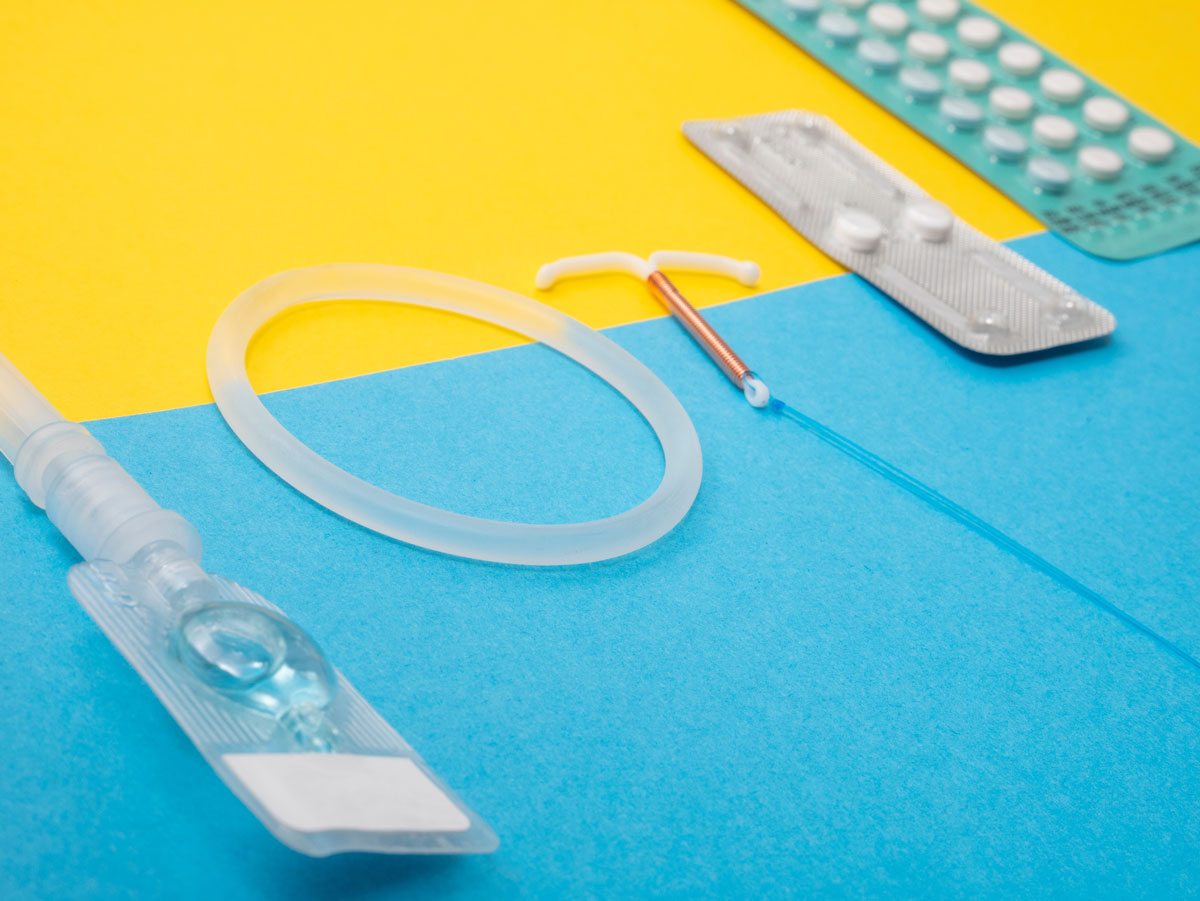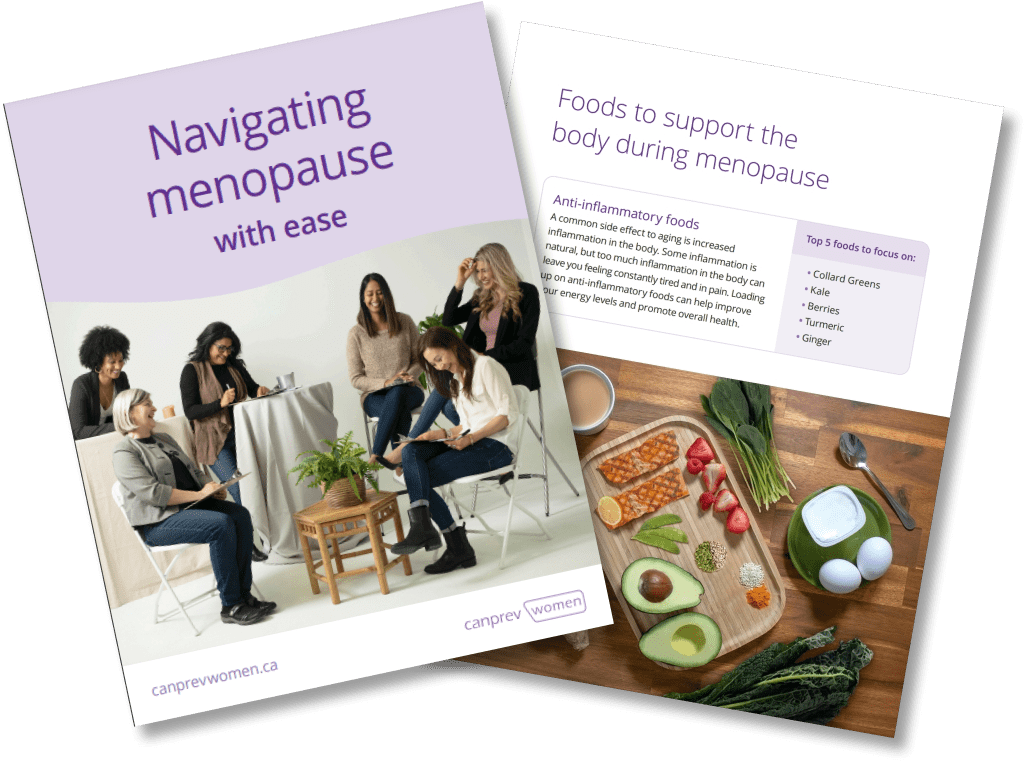When it comes to choosing a form of birth control, the options can seem overwhelming. Birth control has evolved greatly over the years to include a number of both hormonal and non-hormonal options to suit every preference and lifestyle. But with choice come questions, so let’s take a closer look!
How does birth control work?
There are two main forms of birth control options: hormonal and non-hormonal.
Forms of non-hormonal birth control can include creating a physical barrier, such as a condom, or altering the conditions in the uterus to inhibit sperm, like the copper IUD. Specifically, the copper coil in the IUD repels sperm and makes implantation more difficult by affecting sperm motility.
Hormonal birth control works by influencing the female reproductive environment by controlling the balance of estrogen and progesterone in the body. It releases a slow but steady amount of hormones into the body in the form of a progestin, which is a synthetic form of progesterone. This can be a combination of estrogen and progestin, or be progestin only. Progestins act like progesterone in the body, keeping the lining of the endometrium from thickening, suppressing ovulation and affecting the cervical mucous to make it unfriendly to sperm.
Both forms of hormonal birth control work by:
- Slowing down the egg as it travels through the fallopian tube
- Thinning the uterine lining to discourage implantation
- Thickening the cervical mucus to make it harder for sperm to travel
- Suppressing ovulation
Are there any downsides to using birth control?
The main benefit of hormonal birth control is that it provides a safe, effective and temporary option for preventing pregnancy.
Although considered safe, there are some important factors to be aware of. As we mentioned, one of the ways hormonal birth control works is by suppressing ovulation. It does this by supplying estrogen and/or progestin. This interrupts the natural hormonal feedback loop between your brain and your ovaries. If you decide to go off birth control in order to conceive, it can take a while for your body to start ovulating again. This doesn’t happen in all cases, but it is common for the body to need time to restore the menstrual cycle after going off hormonal birth control.
Additionally, hormonal birth control can deplete some nutrients in the body by blocking their absorption and metabolism. B vitamins, magnesium, vitamin C and zinc are all commonly depleted amongst those on hormonal birth control, which is why you should consider taking a good quality multivitamin to prevent nutrient deficiency.
It is also important to keep in mind that these hormonal birth control options do not offer protection from sexually transmitted infections (STIs). Only condoms can protect you from contracting an STI. There are many reasons to consider trying birth control, and many options to choose from. This is why it’s so important to do your research to help you determine the best choice for you!
Birth control options available in Canada
Deciding which form of birth control to use is a very personal decision and there are lots of options available. Consider whether you want to use hormonal or non-hormonal, and if you are interested in a short or long-term solution.
Non-hormonal birth control:
Condoms
There are two types of condoms, an external condom and an internal condom. The external condom is a disposable sheath placed on a penis and acts as a physical barrier that traps the sperm within it. The internal condom is a soft, disposable sheath that is placed inside the vagina and lines the vagina completely to prevent contact and exchange of fluids. Both types of condoms are for one-time use.
Copper Intrauterine Device (IUD)
An IUD is a non-hormonal device that is placed in the uterus and can be worn up to 10 years.
Fertility awareness
This method involves tracking your cycle and knowing when you are ovulating. (You’re most fertile during ovulation.) Although, this method can be somewhat risky, as sperm can survive in the body for up to 5 days.
Hormonal birth control:
The birth control pill
This is one of the most common forms of birth control and is available in two forms: combined and progestin-only. Combined birth control includes an inactive, or placebo week whereas the progestin-only pill does not and is taken continuously. The pill should be taken at the same time every day for maximum effectiveness. (Setting a reminder in your phone is a great way to make sure you’re taking it at the same time each day!)
Implant
The implant consists of a flexible rod which is inserted in the arm, just under the skin. It works by releasing a small, continuous amount of progestin into the bloodstream. Once inserted the implant is effective for up to three years.
Intrauterine system (IUS)
This device is placed in the uterus by your healthcare provider. An IUS releases a progestin and can be worn for 3-5 years.
Vaginal ring
A clear, flexible plastic ring is placed in the vagina and releases both estrogen and progestin. The ring is worn for 3 weeks, followed by a week with the ring removed for the duration of the menstrual cycle.
Patch
This form of birth control contains both estrogen and progestin. A new patch is applied to the skin once a week for three weeks followed by no patch on week 4, which will be the week you have your period.
Injection
This consists of a progestin-only shot that needs to be administered by your healthcare provider every 3 months.
Short term vs. long term birth control
Short term birth control options are ones that need frequent attention like the daily pill, weekly patch or vaginal ring. These methods deliver a combination of estrogen and progestin. They attempt to mimic your natural monthly cycle and will involve a rotation of use to allow for one week of menstruation, which is called the placebo week. During this placebo week you will take pills that contain no hormones, this is the week you get your period. The exception to this is the progestin-only pill. As the name suggests, it contains only progestin with no estrogen and must be taken continuously with no placebo week for your period.
Long term options such as the implant, the injection and IUCs are all examples of the “get it and forget it” style of birth control. Intrauterine contraception or IUCs, are divided into two categories: an intrauterine system (IUS) or an intrauterine device (IUD). The difference is that one is hormonal and the other is not. An IUS is hormonal and releases a progestin, while the copper IUD is non-hormonal.
With the exception of the copper IUD, all long term options are progestin-only based and do not require any further maintenance other than the monthly or yearly follow ups with a healthcare provider. However, because these options do not follow a monthly cycle similar to menstruation, you may find that your period becomes disrupted over time, this can include becoming lighter or temporarily stop.
When considering birth control, there are many options to choose from! And choosing the right one for you all depends on your preferences, medical history and lifestyle. We hope this list can help give you an idea of which type of birth control might be best for you.
Sources:
It’s a plan
Birth control basics
Birth Control Options Available in Canada



